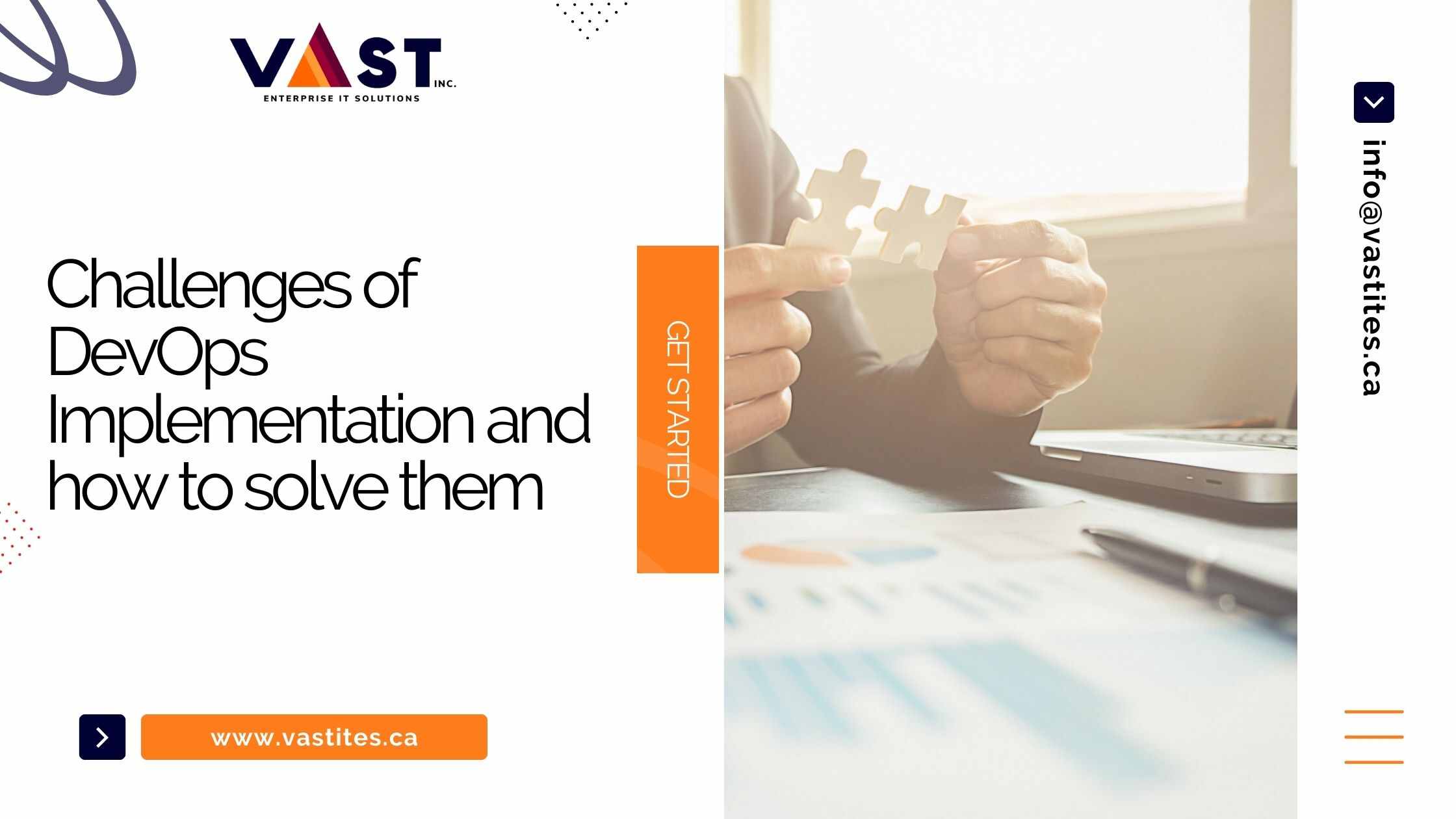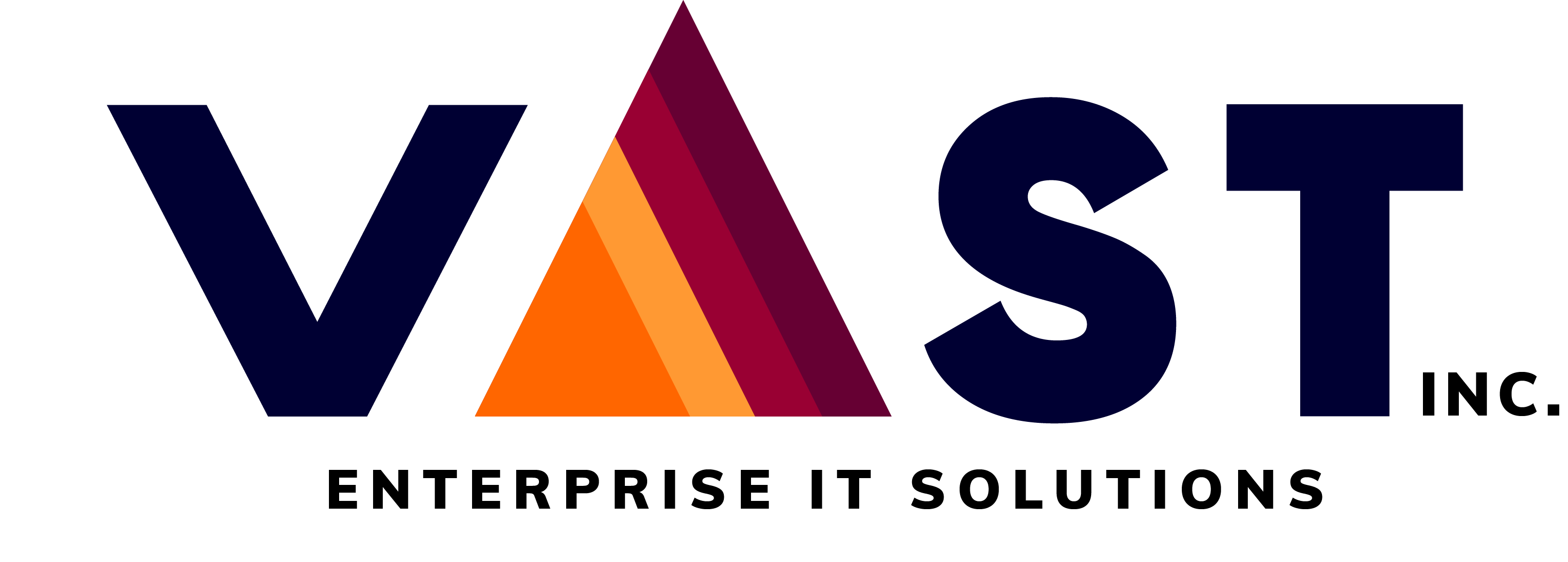
- October 18, 2023
- vastadmin
- 0
Introduction
Nowadays, major companies are trying to implement DevOps strategies for their companies. Which is a positive thing. DevOps makes your applications faster and more efficient. However, companies lack the proper know-how in the implementation of DevOps. Lack of knowledge often leads to improper and poor results. In our previous blog, we learned what is the best strategy to implement DevOps. While implementing a DevOps strategy it is natural to face challenges. Every company is unique on its own and so are the challenges it faces. In this blog, we will discuss the common challenges of DevOps implementation and how can you solve them.
For a thorough analysis of your business difficulties, click here.
Challenges of DevOps implementation and how to solve them
Let us start first by understanding why companies face the challenges of DevOps implementation strategies. As desirable as it is, DevOps sometimes can be tricky to adapt to. Implementing DevOps oftens that there would be a change in the environment which would create a gap.

Let us understand why companies face challenges of DevOps implementation
1. Cultural Resistance
As I mentioned before, implementing DevOps results in bringing in changes. Employees are generally used to working in silos which now is changing due to DevOps. Thus, employees at times create resistance in the process of implementing DevOps. It can be a nightmare for the employees and stakeholders to digest this sudden change. DevOps cannot be be applied overnight; the implementation is gradual and soft.
How to solve
This will give room to others to slowly adapt to DevOps and realise the difference between the old ways and the new ways. Once the teams can see the benefits, they will be able to apply DevOps more naturally. This will ease their familiarity and get them on board with the new ship of DevOps.
2. Lack of skilled personnel:
DevOps is still a new technology in the market and people are still not aware of it. Even if they are, they wouldn’t have the skills to implement DevOps. Hiring a dedicated team for DevOps can also cost a fortune, not to mention the additional maintenance costs. They are not even experienced enough to handle your changing environment with the crisis you would be facing.
How to solve
A solution for this could be hiring an agency. They would be the best fit as they would have hands-on experience and technical. Check out the Best DevOps Consultancy in Toronto here.
Complex Legacy Systems:
Legacy systems are one of the major issues while transitioning to DevOps. This software was earlier and the possibility of adapting DevOps was not kept in mind. This makes it difficult for them to work properly in the changing environment. It could be possible that you would still be using old systems that might not be compatible with DevOps tools. It causes delays and additional costs.
How to solve
Dealing with Complex Legacy systems cannot be easy. You may adapt to CI/CD practices or automate your infrastructure to deal with operation workloads associated with microservices architecture.
Inadequate Planning and Strategy Implementation:
There can be gaps in the implementation of the DevOps strategy. Poorly defined goals or lack of knowledge and understanding can cause implementation failure.
For DevOps to work efficiently you need to first analyse your whole company and its needs. You need to make an action plan and stick to it. You cannot afford to randomly start working with DevOps and not think about the foreseen future.
Many companies make DevOps strategies with huge goals that they might not even be able to achieve. Creating a complex strategy only creates a barrier for them to apply that strategy. Often, they are not able to stick to their strategy and fail to apply DevOps.
How to solve
To avoid this situation, you have to create a simple DevOps strategy best suited for you and your needs. Don’t make big promises and set high bars that you won’t be able to achieve. Start by taking baby steps and setting achievable and realistic goals. Always keep in mind to appreciate small achievements and improvements. This will help you to stay consistent and attain your desirable goals.
Tools Overload:
This is the major factor that most of the companies overlook. To attain an efficient DevOps strategy you need to choose the proper tools according to your needs and budget. At times, companies lack knowledge in this niche hence they end up either using all kinds of tools or using the wrong tools. It is often seen that they even lack the knowledge about how to use DevOps tools properly.
Companies often get blinded by the latest tools in the market. They give excessive focus on the newer and more powerful tools. . At the time of introduction of new tools to the implementation plan, their employees are not able to cope with the new technology and are not able to work with it along with the old systems.
How to solve
These issues are tackled by introducing employees to the new technology and making them practice it till they are used to it.. This avoids complex system issues with already new technology.
Check out this post to learn more about Best tools to learn DevOps.
Short term goals
Your company would only focus on attaining short-term goals for immediate benefits. DevOps is a continuous process. Implementing DevOps for the long term can help you achieve sustainability.
How to solve
Make a strategy for your long-term goals. Plan out how you will apply DevOps in your strategy and how it can help you to meet your goals.
DevOps Metrics to measure success
Now that you understand what companies face challenges of DevOps implementation. A key factor to keep in mind is to practice DevOps metrics to measure success. You would have often heard the buzzword DORA Metrics. DevOps Research and Assessment metrics that help DevOps teams understand how efficiently they develop, deliver and maintain the software. These are defined by Google’s research and assessment teams.

The DORA metrics consists of 4 key metrics to track the performance of software. These metrics are:
- Deployment frequency
- Lead time for changes
- Time to restore service
- Change failure rate
DORA metrics can be great asset for development teams. They can use this to track their performance and improve by offering higher value products and services to customer. By measuring data of performance, they will get a clear picture and create an action plan by setting clear goals with continuous improvement.
Conclusion
In summary, DevOps implementation, while promising greater efficiency, often encounters challenges like cultural resistance, skill shortages, legacy systems, and inadequate planning. To mitigate these issues, adopt a gradual approach, consider external expertise, set realistic goals, invest in proper tooling and employee training, and prioritize long-term sustainability over short-term gains. But the Challenges of DevOps implementation are tackled easily. You should also keep in mind to practice DevOps metrics to measure success. Utilizing DORA metrics—deployment frequency, lead time for changes, time to restore service, and change failure rate—can provide valuable insights and drive continuous improvement, ensuring that DevOps delivers lasting benefits to your organization.
